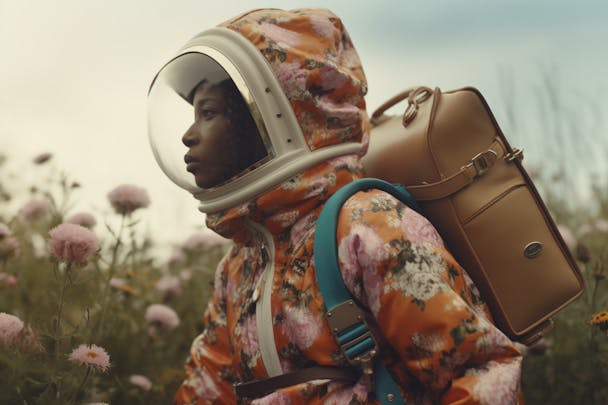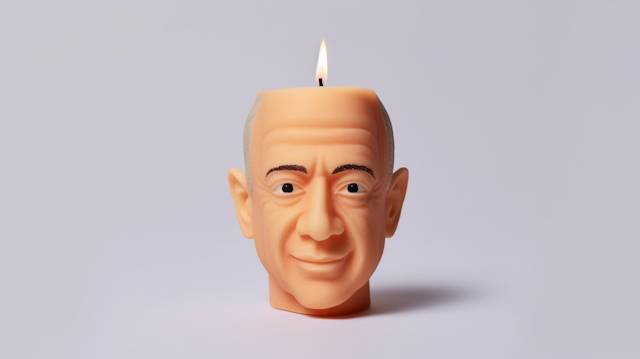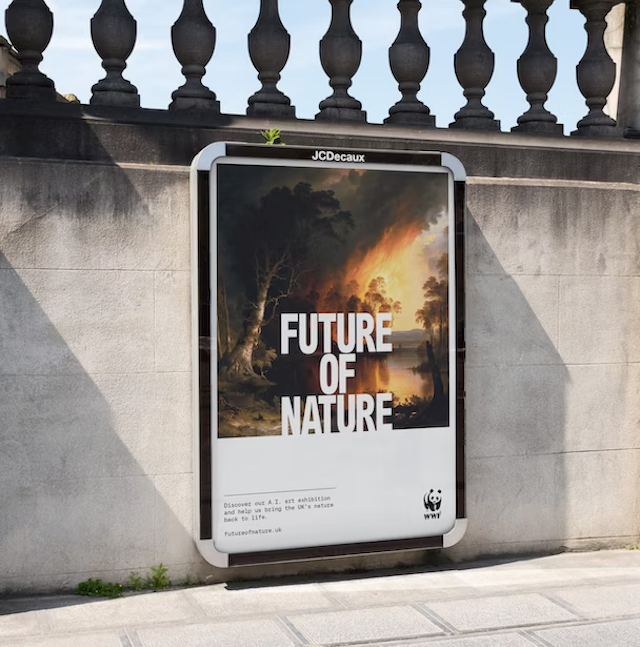Confused about Midjourney? Here’s how Uncommon is using the tool right now
The image-generating software has become one of the most popular AI applications on the web. We discover how creative agency Uncommon is getting the best out of the tool.

An image created by Uncommon’s Ben Golik using Midjourney, for an internal moodboard / Uncommon
Midjourney is currently one of the most widely used AI applications on the web. The software, first released last July and now in its fifth version, is considered one of the most accessible AI tools.
So far, the application is available only through a bot on Midjourney’s official Discord server. In its most basic mode, users request images by entering a prompt (a string of words or phrases) in a direct message to the bot, which then generates dozens of options in response by pulling on a vast database of imagery originally taken from elsewhere on the web. Access to the tool costs between $10 and $60, depending on how many images a user wants to create.
It is now widely used by many ad agencies, deployed either as an experimental tool or a fully fledged commercial application.
Advertisement
Saving time and bringing ideas to life
At Uncommon Creative Studio, the London agency recently acquired by Havas, creative partner Ben Golik says the agency is using Midjourney “at every stage of the process – in conceptual development, in pitching and presenting and work development, and in one case in work that’s gone live in the world.” It has been using the tool in earnest since its third version was released in the spring of this year.
In particular, the tool has been useful for illustrating internal presentations, he says. “We did a pitch recently and I counted the images afterward. For a couple of hundred slides, 60% included an AI-generated image. That was just to illustrate strategic points or to bring to life a creative idea… but who’s going to sit and draw from Google or a stock library when you can just type what you want and get it?”

Getting the desired result from the software takes some getting used to. “I’m not saying there’s a huge amount of authorship in creating a prompt, but there is certainly a knack to getting what you want out of it.”
Golik says the team found Midjourney handy when creating images for a concept product. “We were trying to turn Jeff Bezos’s head into a candle. It was one of those pitch ideas that wouldn’t run because Jeff would sue us. But we wanted a visual of his head as a wax candle,” he explains.
“Midjourney knows very well who Jeff Bezos is and how to turn his head into a very suitably waxy candle. We then took that flat image into Kaedim [a 3D modeling application] and created an in-the-round manufacture-ready prototype.”
“You’ve still had to have the idea. That’s the job, right? But from having an idea to having an image to having a prototype-ready 3D model in minutes rather than hours or days… that’s interesting.”
Advertisement
Furthermore, he says that using Midjourney to illustrate internal documents or presentations means that Uncommon’s designers and art department can get on with working on actual client creative. “All agencies mulch a lot of design time making stuff that never runs. If we can free up our design team to focus on gloriously crafting the end product, that’s a fantastic use of Midjourney.”

The agency has employed the tool for one client campaign so far – a series of images highlighting the loss of global biodiversity for the World Wild Fund for Nature (WWF) called ‘Future of Nature.’
“Essentially, we got Midjourney to look at old English masters like Constable, paintings of beautiful bucolic landscapes and combined that with projections of climate data. It created future versions of what that painting would look like in 2050 or 2060 – old masters reimagined as a terrifying future.
“That became an art installation on The Strand [in London] to raise awareness about the impacts of climate change. It was a really interesting thought experiment.”
Suggested newsletters for you
Legal and ethical issues
Golik says that the unresolved legal and ethical issues around Midjourney are “always at the back of [his] mind,” but that “the cat’s out of the bag.” Of particular concern are the copyright issues surrounding the tool’s underlying database.
“Picasso said good artists borrow, great artists steal. It’s a good quote, but I feel like Midjourney is theft on an industrial scale.”
He thinks the alternatives don’t shape up or are too expensive. “Shutterstock, for example, has built its own walled garden version. It has only trained its generative AI on its own library, so it has got around all the ownership issues.” But Golik suggests Shutterstock’s smaller dataset will yield less diversity in the images created – and in any case, its competitors don’t cost as much.
Though he believes Midjourney’s copyright issues will be resolved soon, Golik says the inability to copyright work made with the tool means it can’t be deployed for ready-to-use creative. In the short to medium term at least, it’s best used for concept development and internal imagery. “That’s the safe space to play at the moment.”
Interested in learning more about how ad agencies employ generative AI tools today? Keep your eyes peeled for further articles in this series.

